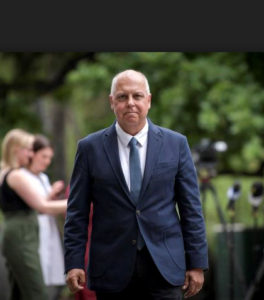Migration the key to economic growth – budget papers
Population growth, and particularly overseas migration, has been a key driver of Victoria’s economic growth in recent years and the reason the state has outperformed the rest of the country, the 2019-20 Victorian State Budget papers show.
Victoria’s Gross State Product (GSP) grew by 3.5 per cent in 2017-18, ahead of the national average of 2.8 per cent and employment growth was 3.8 per cent compared with a national average of just 2 per cent.
Secretary of the Department of Treasury and Finance David Martine said that population growth had been a large contributor to economic growth in Victoria.
Since 2000, Victoria has seen exponential population growth. Between 1850 and 2000 around 30,000 people were added to the population each year but since 2000, that number has been closer to 100,000.
“That is like adding a city the size of Ballarat to the population each year,” Mr Martine said.
In 2017-18 Victoria saw 85,000 overseas migrants settle in Victoria, mostly close to the inner city.
“These are people who are generally younger and better educated than the native-born population,” Mr Martine.
He said population growth created a need for more infrastructure leading to the state government’s significant building program.
Infrastructure projects, including the Westgate Tunnel, the Metro Tunnel, the North-East Link and level crossing removals will see $136 billion spent over the next five years.
Of the 2.75 per cent growth in Victoria’s economic forecast for the coming year, about a third is due to the government’s ambitious public works agenda.
Among the major features of the $71bn 2019-20 state budget spend are: $882 million for subsidised universal 3-year-old kinder; continued spending on the North East Link; Suburban transport upgrades including level crossing removals; $5.5 billion in hospital services and dental care for school children; and, improved rail services.
The budget papers show 53 per cent of state government spending is on health and education while another quarter goes on transport and public order.
A weakened housing market has stripped about $5 billion from state government revenue over the forward estimates because of lower level of property transfer tax (stamp duty) but budget estimates say the property slump has bottomed out.
Also contained in the state budget was an extra $63.1 million in funding to support Victoria’s multicultural communities.
This includes $27.1 million to upgrade seven culturally specific aged care facilities, and to purchase land for another three as well as grants of $4,000 to senior citizens’ clubs to assist them in holding cultural activities for their members.
The budget also contained a commitment of $2 million to support social cohesion and promote respect for Victoria’s diverse communities through its Anti-Racism Action Plan.
On the revenue side, the government has introduced a 2.75 per cent royalty on gold miners and up to an eight per cent surcharge on foreigners purchasing properties.
There are also increases on duty for luxury imported cars and the government is considering a tax on home tennis courts.
Laurie Nowell
AMES Australia Senior Journalist












